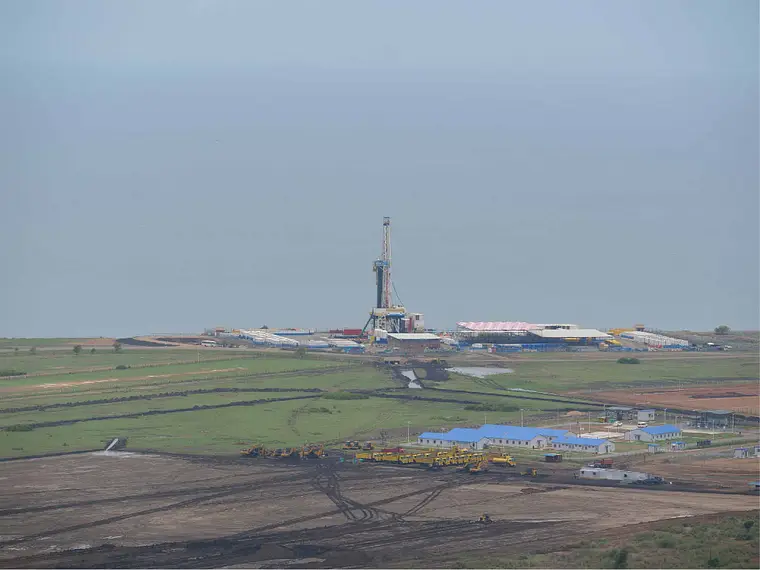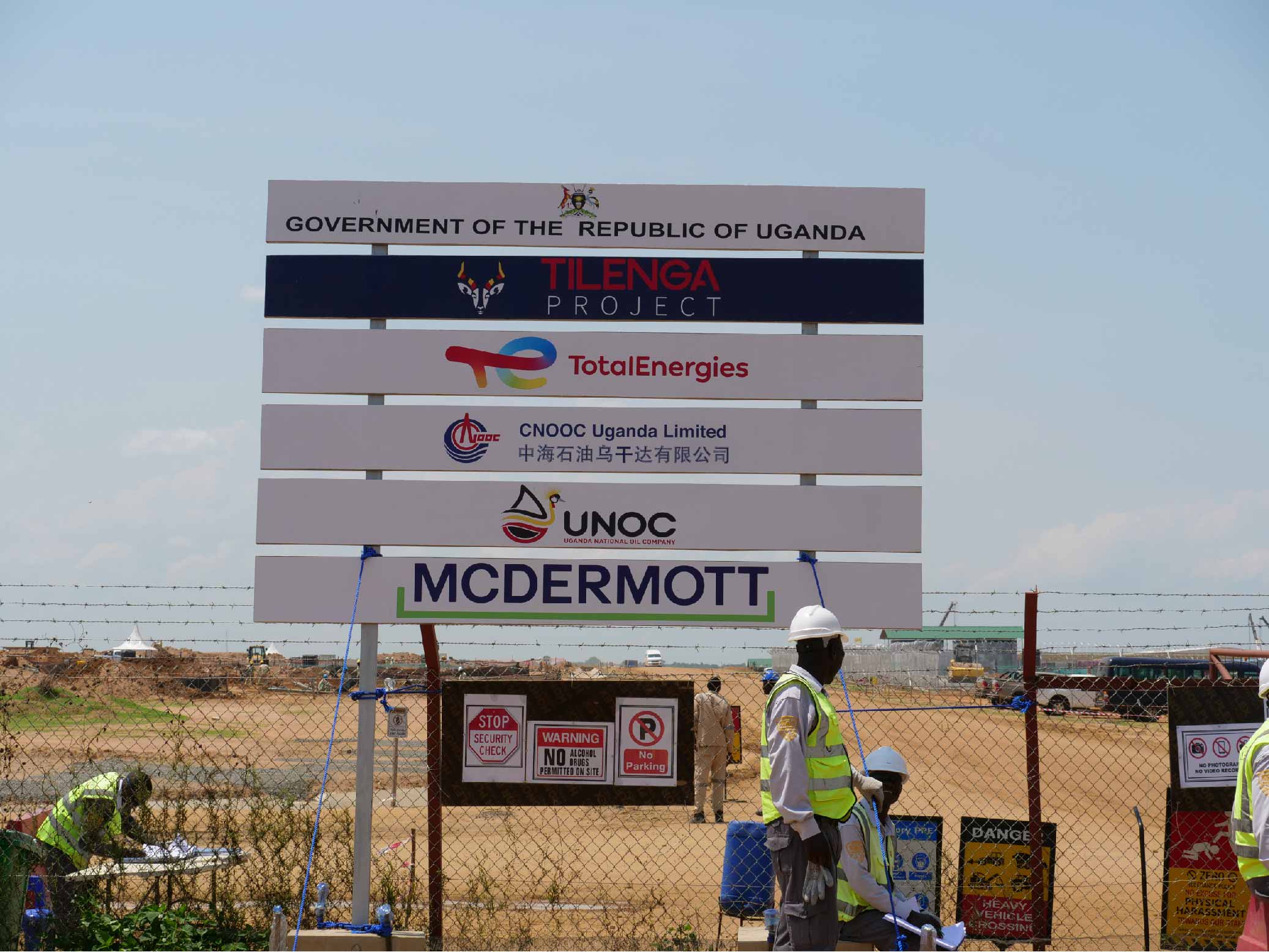Kabalega International Airport
By Josepha Jabo
From Tuesday, August 15, till Thursday, August 17, 2023 I visited the oil region in Hoima. The field visit was organised by Petroleum Authority of Uganda (PAU) specifically for private companies. It was a sunny, Tuesday morning when we set off from Kampala. The Barrel Team (Bravo, Andrew, the security personnel, the driver and I) jumped into a white, Land Cruiser and headed straight for Western Uganda! We knew we had left the capital city far behind us when Kampala’s bumpy, potholed roads evened out into the smooth, oil roads of Hoima.
After a long road trip, we arrived in Hoima early in the afternoon and immediately checked into De’Place Hotel Hoima. After we had settled into our rooms, we linked up with other private companies at PAU offices in Hoima Town. Thereafter, we drove to a building in Kabalega Industrial Park, which includes the airport and refinery area. We entered a classroom, in the building, where a big map of the park was displayed at the front.
“One of the projects, within Kabalega Industrial Park, is an airport in the oil and gas industry to ease transportation; by flying in big and heavy equipment that will be used in the construction of the refinery. That is the reason why you find the airport here and not in any other part of Uganda. It will be the second international airport, after Entebbe International Airport. The airport is in the middle of the industrial park. The airport is 94% complete.
It is the only project that has taken shape within the industrial park. Recently EACOP also came and set up camp here, for the pump station 1, but in the four to five years we have been on ground, it is only the airport that has been constructed. The airport is being constructed by a joint venture company (SBI International Holdings formed a joint venture with CORAS UK) and it is registered in Uganda as SBC Uganda Ltd, we are the principal contractors of Kabalega International Airport (formerly Hoima International Airport).
The contact period was four years and ten months and we started this project in 2018, so it is expected to be delivered within this year,” Amos Muriisa, the SBC Public Relations Officer, informed us. According to media reports, the airport will be complete by October 2023, but Amos was noncommittal to stating the exact month because it is the ministry to confirm.
“Where we are now is the main camp for SBC Uganda Ltd, the contractors of Kabalega International Airport. On site there is SBC the contactor, the consultants and the Ministry of Works as the employer—these three are overseeing the project. The project is being funded by United Kingdom Export Finance 85%; the Government of Uganda, through Standard Chartered Bank 15%. The cost of the project is around €309 million Euros and €264 million Euros is meant for construction,” Amos explained.
Amos shared the initial challenges that the contractor had faced with the local community, who were worried that they were not going to benefit from the project. “In the construction industry we need people with skills; operators of bulldozers, excavators and cranes. Yet, the people here had papers in other qualifications.
It was a very big challenge to settle down here, when we were bringing people from outside (people we have been working with in the road projects) to do the work. Yet, we had to finish the contract within a set period of time. We had several meetings with stakeholders and we reached a consensus that we would reserve 30% for the local community and leave 70% for the technical people, who were working in construction. 30% was left for the locals; administration, clerks, cleaners, flag ladies—you don’t need to go to Jinja to bring someone to control traffic! We had to start skilling the locals.
We partnered with about four vocational institutes in the area, because we wanted operators and mechanics. In case a cohort of 70 students were qualifying with a diploma in mechanics, we gave them a chance (internship) to train on our equipment. We would identify those who are bright and retain them. We now have over 70 operators we have skilled from this region, who have been working with us for the last four years.
We had agreed on 30%, but now we are over 40 % of local content! When you say local content, you mean Ugandans, but we can even call it community content. We have sponsored some of the youth in the affected population to go for training, afterwards we retain them and they become our operators. There was a partnership between GIZ and KCB.
We have over 200 youth from this area who have been trained in plumbing, machinery, welding and other skills, so at least now there is skilled manpower within this region. But not all of them can be skilled or employed, so we went ahead with our Corporate Social Responsibility (CSR), so everyone could benefit; because if we had not fully penetrated the communities, we were going to meet stiff resistance from the people, for the oil and gas industry to settle down here.
We identified areas of concern, like education. We looked at the schools neighbouring the project. We identified and renovated three schools and equipped them with scholastic materials, furniture, sports items and most importantly each of the schools has a computer laboratory donated by SBC Uganda Ltd.
One example is Kabaale Public School, we gave them a computer laboratory in 2018, when it had around 300 pupils; but within a year’s time it had 1,200 pupils and it emerged the best performing government primary school in Hoima District. So, we realised the impact! Right from Primary One to Primary Seven the pupils in this area know how to use a computer, which is very rare in most of Uganda.
We had an influx. When we (SBC Uganda) first came here and contracted this project; many people were attracted to follow us. Some were looking for jobs, some were looking for business and some were wives of the workers—so the population tripled! If a health centre was designed to handle 500 patients in a week, it was now handling 3,000 patients!
If we did not intervene, the health centres were becoming overwhelmed and there could be disease outbreaks in the region. We had to support these health centres. We have equipped three health centres in the area, we have given them beds and beddings, health equipment and we give them water on a daily basis, our water bowsers distribute water.
We have stationed one brand-new ambulance at a health centre, to evacuate expectant mothers who get complications, to Hoima Regional Referral Hospital. We have equipped the health inspectors with four motorcycles, to monitor sanitation and hygiene in the villages. When we came here there was an outbreak of cholera in the region, being on the border, at the landing sites, people were sharing water with animals!
We have given about 13 boreholes to the communities, so sharing water with animals stopped and they are now drinking safe water. In planting season and rainy season, with the guidance of the district agricultural officer, we give out mango, passion fruit and orange seedlings and we advise the people to plant. Environment and the conditions of aviation does not allow us to plant trees within this area, because birds are hazardous to aircraft.
They can cause an accident. So we advised that we compensate the trees, which we removed from this area, and plant them at a distance to protect the environment. Even if your son is not employed directly this project, but one day our ambulance saved your wife, when she had complications at the health centre, then you are benefitting. Not directly, but indirectly. This has created a good environment for us to work in this region, so when we talk about finishing the project people say, “I wish you could stay!””
After the lecture, we entered our 4x4s and drove to the airport. Amos pointed out that the whole stretch is 5 kilometres, with two turn pads, two safety areas, an approach lane and taking off lane, “But the actual runway at Kabalega International Airport is 3.5 kilometres in length.
Its width is 45 metres; with an additional 15 metres of shoulders, to allow the airplane wings on both sides to move without any obstacle—so in total the runway has a width of 75 metres. An aircraft will touch the ground at the beginning of the runway, then it will turn and enter the terminal area to the apron, which in layman’s language is called the parking yard.
The apron has the capacity to host the four biggest cargo planes in the world, the Antonovs, four (4) Antonovs at the same time. At the apron, it will offload cargo and passengers. The terminal building will handle passengers on one side and cargo on the other side. When a big cargo plane takes off, within 40 kilometres (it needs 40 kilometres before it can start following coordinates and navigational aids because it takes off with a lot of strength and momentum) it would have entered the airspace of DRC.
That is why big cargo planes are restricted to flying in the direction over Bugoma Forest, within Ugandan territory; but this does not apply to smaller aircraft, which can fly in the opposite direction, turn at the turn pad and within 10 kilometres can begin following coordinates and navigational aids,” Amos informed us, as we took photographs of the tarmacked runway and two Al Jazeera journalists filmed the airport.
“It has an air-ground lighting systems house; there is a generator house and hydropower substation, we are yet to receive a power line. There will be an emergency response team at the air rescue firefighting facility; 3 stationed water tanks will be there, to respond to fire on the runway etc. There will be about 20 housing units, on a nearby hill, for airport operators,” Amos concluded. It was now late afternoon, evening was approaching; we were done for the day, so we headed back to Hoima Town.
The writer works for Uganda Media Centre
Related Projects
Barrel Magazine is a corporate magazine covering the Petroleum Industry in Uganda/East Africa with a global perspective. It is the first of its kind in Uganda, providing a quarterly in-depth update across the oil and gas industry value chain.
Kingdom Kampala, W13 6th Floor, Nile Avenue Kampala.
info@barrelmagazine.com
© 2024 Barrel Magazine - Uganda's Petroleum Industry Magazine.




